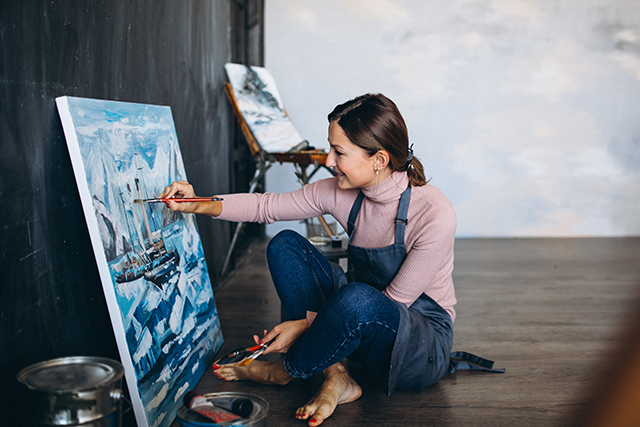1. Introduction to Storyboarding
Storyboarding is a visual planning technique that involves creating a sequence of images to outline the key elements and flow of a story. It serves as a blueprint for filmmakers, animators, and artists to organize their ideas and visualize the final product before production begins. Storyboards provide a visual representation of the narrative, allowing creators to refine their concepts and make necessary adjustments before investing time and resources. The concept boards could be adjusted depending on the visual planning.
2. The Importance of Storyboarding in Visual Arts
Storyboarding plays a crucial role in the visual arts as it allows artists to communicate their vision effectively. By mapping out the story, characters, and scenes, artists can experiment with different compositions, camera angles, and visual styles. This process enables them to make informed decisions and ensures a cohesive and engaging final product.
3. The Process of Storyboarding
Developing the Concept
The first step in storyboarding is developing a concept. Artists brainstorm ideas, create characters, and establish the core elements of the story. This stage involves defining the setting, plot, and character motivations, which form the foundation of the visual narrative.
Creating the Visual Narrative
Once the concept is solidified, artists start translating their ideas into a visual narrative. They break down the story into key scenes and determine the sequence of events. Each scene is depicted through a series of panels, capturing the essential moments and actions that drive the story forward.
Establishing Composition and Camera Angles
Composition and camera angles are crucial in storyboarding. Artists strategically position characters, objects, and elements within the frame to create visually appealing and meaningful compositions. They experiment with different camera angles to evoke specific emotions and guide the viewer’s attention.
4. Techniques for Effective Storyboarding
Storyboarding requires a range of techniques to effectively convey the story and engage the audience. Here are some essential techniques employed by artists:
- Sketching and Drafting: Artists use sketching and drafting to create rough drawings of each panel in the storyboard. This allows them to quickly visualize their ideas and make necessary changes before finalizing the details.
- Framing and Composition: The arrangement of elements within each panel is crucial for visual impact. Artists carefully consider the composition, ensuring that the placement of characters, objects, and backgrounds creates a balanced and aesthetically pleasing composition.
- Use of Color and Lighting: Color and lighting choices can greatly influence the mood and atmosphere of a scene. Artists use color palettes and lighting techniques to evoke specific emotions and enhance the storytelling.
- Emphasizing Expressions and Emotions: Facial expressions and body language play a significant role in conveying emotions. Artists focus on capturing subtle nuances and expressions to effectively communicate the characters’ feelings and reactions.
5. Storyboarding in Different Art Forms
Storyboarding techniques are applied across various art forms, including:
- Film and Animation: Storyboards are an integral part of the pre-production process in filmmaking and animation. They help directors and animators plan the shots, camera movements, and overall visual progression of the story.
- Advertising and Marketing: Storyboards are widely used in advertising and marketing to visualize and present ideas for commercials, promotional videos, and campaigns. They allow clients and creative teams to align their vision and make necessary adjustments before production.
- Video Games: Storyboarding is also employed in the development of video games. Game designers create storyboards to map out gameplay sequences, cutscenes, and interactive elements to ensure a cohesive and immersive gaming experience.
6. Collaborative Aspects of Storyboarding
Storyboarding often involves collaboration between artists and other professionals in the creative process, such as:
- Collaboration with Directors and Producers: Artists work closely with directors and producers to understand their vision and translate it into visual storytelling. They incorporate feedback and make adjustments to align the storyboard with the overall creative direction.
- Collaboration with Cinematographers and Art Directors: Cinematographers and art directors collaborate with storyboard artists to determine the best camera angles, lighting, and set designs. This collaboration ensures a seamless transition from the storyboard to the final visual execution.
7. Tools and Software for Storyboarding
Storyboarding can be done using both traditional tools and digital software, including:
- Traditional Tools: Many artists still prefer the traditional approach, using pencils, paper, and storyboard templates. This hands-on method allows for a tactile experience and quick ideation.
- Digital Tools: With the advancement of technology, digital storyboarding tools and applications have gained popularity. Software like Adobe Photoshop, Storyboarder, and Toon Boom Storyboard Pro offer digital platforms for creating and organizing storyboards.
8. Storyboard Mastery: Tips and Insights from Experts
To master the art of storyboarding, artists can consider the following tips and insights from experts:
- Developing a Unique Style: Cultivate your own artistic style and storytelling approach to make your storyboards stand out. Embrace experimentation and find innovative ways to convey your ideas.
- Experimenting with Different Techniques: Explore various techniques, such as different drawing styles, composition approaches, and visual storytelling methods. This experimentation can lead to breakthroughs and expand your creative horizons.
- Studying Film and Art History: Gain inspiration and insights by studying the works of renowned filmmakers, animators, and artists. Analyze their storytelling techniques, compositions, and use of visual elements to enhance your own skills.
- Continuous Learning and Adaptability: Storyboarding is a dynamic field that evolves with technology and artistic trends. Stay updated with the latest tools and techniques. Attend workshops, read books, and engage.
9. Conclusion
Storyboarding is a powerful tool that allows artists to channel their creative genius and bring their artistic vision to life. By meticulously planning and visualizing the story through a series of panels, artists can effectively communicate their ideas, composition, and narrative flow. Whether in film, animation, advert. The scenesbydean.com works with creativity and passion towards achieving client goals.
